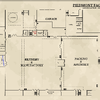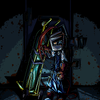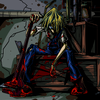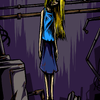The Beginning
Posted On: 13 Sep 2023, 03:02 PM
Posted By: rollee
In 1920, Godwin Piedmont sold a concept to the City of Lecton of a revolutionary place that would remove poverty while simultaneously progressing the city's industry. A place where orphans would be taken in, given a place to stay, food to eat, educated, and be taught the value of hard day’s work. In a time of booming industrial idealology, this concept was taken in with much veneration. Lecton City approved of the concept and thus started construction of Piedmont Factory.
Despite what it was a sold as even a skin deep assessment of Piedmont would’ve revealed that it was in truth a den to child slavery. A place so ruthlessly driven the term “sweat shop” would’ve been too good for it. But what was hidden even beneath that facade was an underworld of illegal trade. Underneath the factory floors, in its gigantic basements, Piedmont had distilleries that brewed prohibition liquor and labs that churned out opioids, including the recently banned heroin. The actual factory itself was just a front with its perceived production simply being a way to secretly ship its illegal ones. This was why Piedmont could tolerate the craftsmanship of untrained children and take the losses that would entail.
Publicly, Piedmont Factory was a resounding success. As far as the City of Lecton was concerned Godwin managed to take homeless waifs off the street and was making honest working class citizens out of them. Even when the Great Depression hit, Godwin was still coming across windfalls. The sudden downfall of society increased the demand for drugs and alcohol while chains of broken families further filled his factories with small working hands. The factory developed a reputation as a self-sufficient safeguard during those dark times.
Of course things were not as good as it seemed. When law enforcement began fiercely cracking down on the opioid epidemic, supply of raw materials became heavily restricted. Since Piedmont’s legitimate business was essentially nonexistent the losses began piling up. Furthermore, years of wasteful mismanagement had left a trail of evidence that was slowly leading the police to the factory’s walls. Finally, when Godwin’s contacts warned him of an upcoming law stirring in congress that would restrict child labor; that was the last straw.
There is little hard evidence of what happened next but historians mostly agree that the implications are damning. Riding on the coattails of Piedmont's still perceived success, Godwin managed to take a substantial insurance policy on the factory and his children, for whom he was for all intents and purposes their legal guardian. A little over a month later would go down as Lecton’s greatest tragedy, the legendary Night of the Fire. Piedmont Factory, any evidence within it, and of course the lives of the 31 children trapped inside all went up in flames. Godwin himself made a public speech lamenting the tragedy and dedicated a memorial to the lives lost. Afterwards he wiped his hands clean of the whole thing and left Lecton.
Such cruel acts of blatant greed and complete disregard for human life left scars deeper than anyone could’ve imagined for the heart of Piedmont Factory still stirs, beating with hate.
















